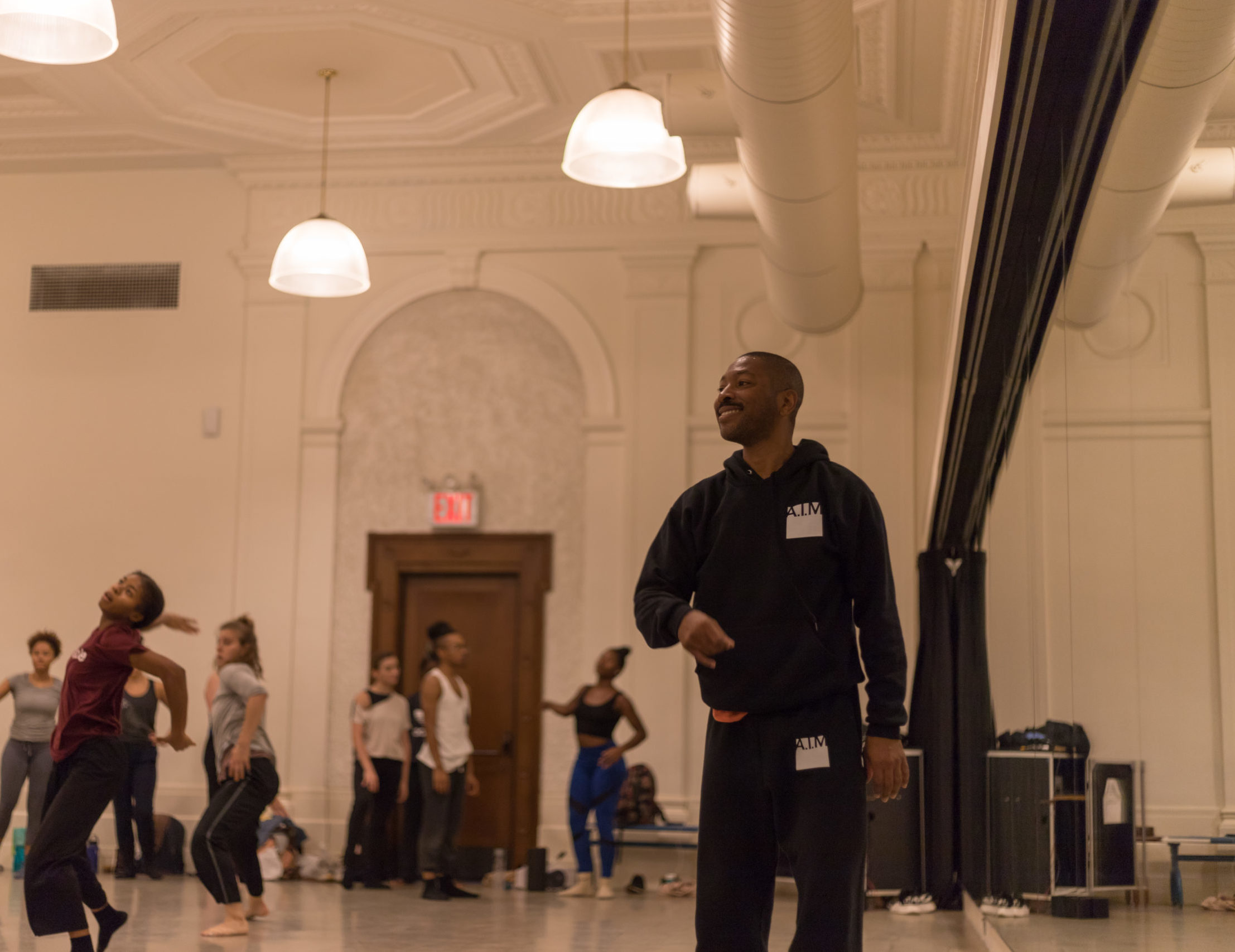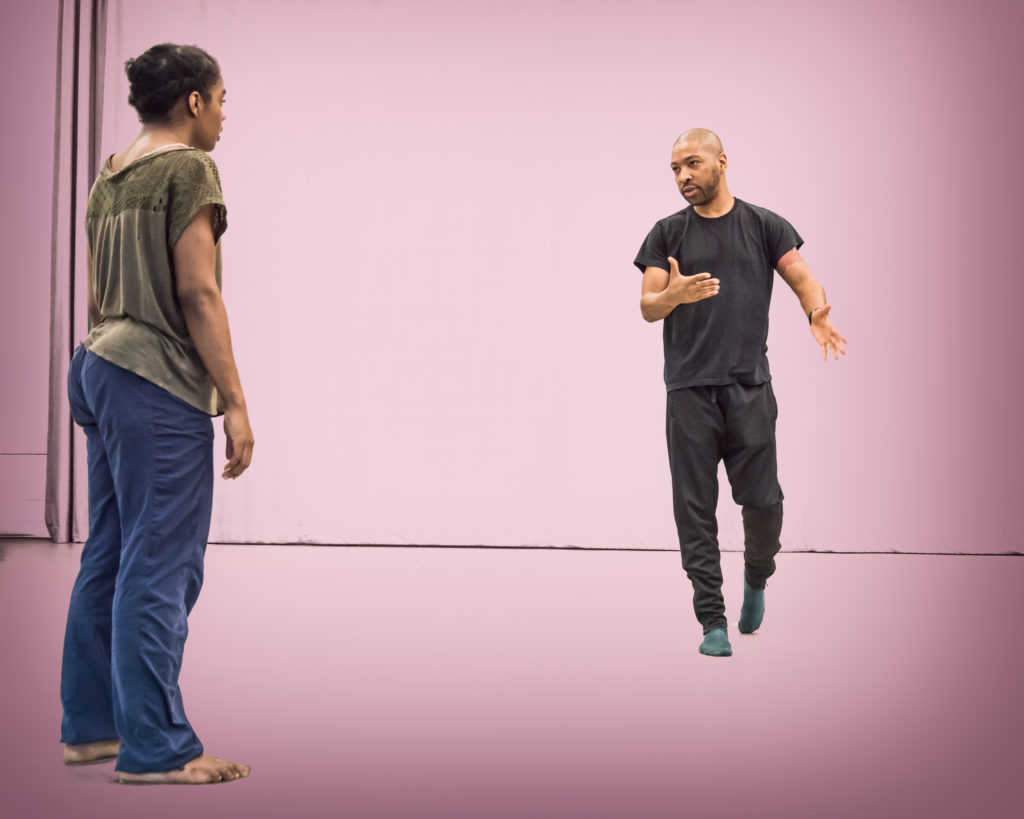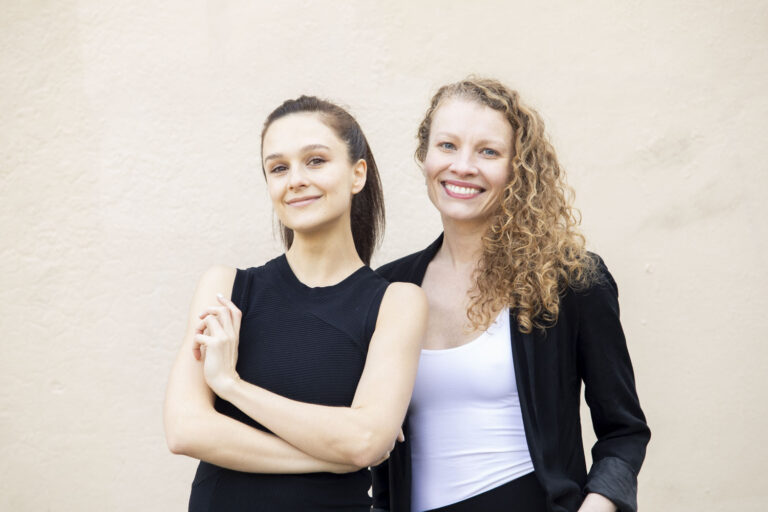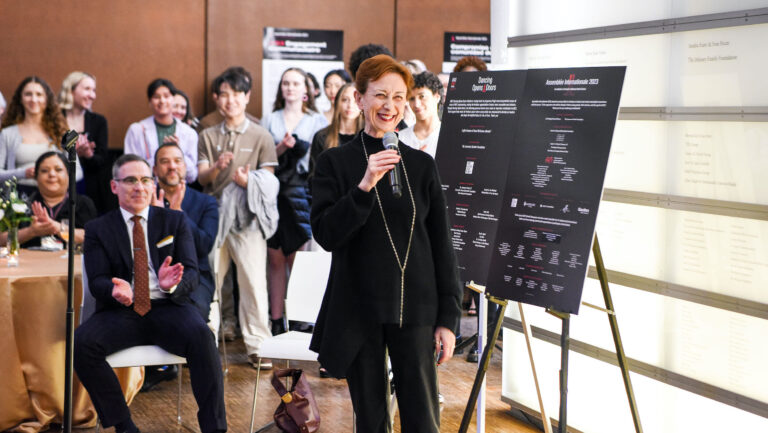
Choreographer and dancer Kyle Abraham recently added another prestigious feather to his cap: This fall he becomes the Claude and Alfred Mann Endowed Professor in Dance at the USC Glorya Kaufman School of Dance. He takes over from pioneering dancemaker William Forsythe, who held the inaugural endowment starting in 2015.
Abraham has created works for some of the world’s most celebrated dance companies and artists, from New York City Ballet and Alvin Ailey American Dance Theater to Misty Copeland and Calvin Royal III, as well as for his own company, A.I.M. His evocative blend of abstract movement and personal storytelling has garnered critical acclaim and a raft of accolades—a MacArthur Fellowship, a Princess Grace Statue Award, a Doris Duke Artist Award, a Bessie Award for Outstanding Production and a Jacob’s Pillow Dance Award, to name a mere few.
Passionate about dance education, Abraham also brings to the USC role a rich resumé as an educator that includes teaching technique, choreography, repertory and master classes, as well as five years on the faculty of UCLA’s World Arts and Cultures/Dance. And although he holds a BFA from SUNY Purchase and an MFA from NYU Tisch School of the Arts, he still deeply values the lessons and inspiration of his childhood teachers in Pittsburgh, Pennsylvania, some of whom have become lifelong mentors. Via Zoom from London, Abraham shared with Dance Teacher his plans for USC and his philosophy of teaching across the generations.
What drew you to USC Kaufman?
Making the switch between a research institution and a conservatory program, I’m going to be really curious to see how expectations come into play in a way that maybe they weren’t before. It’s a refocusing of the lens through which my work as an educator is viewed. Because it’s a private institution, there’s more immediacy in what’s possible—on one of my early calls with them, I was talking about something I was experiencing in the studio and a faculty member said, “Let’s teach a course on that.” The immediacy is exciting, as a creative person.
How does it feel to be taking over from William Forsythe?
It’s actually kind of scary! I have so much love, respect and adoration towards Bill Forsythe and what he has done not only in ballet but in dance in general—and in art in general. To know that I can call him on the phone with any questions I have—it’s kind of mind-blowing. That’s kind of the biggest incentive! How is this real?
Your appointment is five years, six to 12 weeks per year. How will you structure your time?
The goal is to be there for six weeks, say, and then make every effort to find other chunks of time when I can be present in some way. Maybe in the fall I can be there for a week, and I could come back months later with ideas of how best to work with the students that I’ve gotten to know previously. And if there’s a performance, I can make the space to be there to see the work. It will be really exciting to see where they get to in four years. And in some cases, beyond, because some of the information I hope to impart is about company life and structure, and that transition from college to the professional world. One thing that’s super-exciting for me and for USC is building this relationship not only with me but with my company and collaborators.

This role has tremendous leeway in terms of what you want to teach—technique, repertory, choreography, composition. Any ideas about what you want to do?
Something that I hope to bring to the table is connecting the students that much more to their own personal history and empowering their voices all the more. Those are things I love doing. As someone who used to study at the Cunningham studios and The Ailey Studios and at Movement Research, I want to honor all of that in what I do and in how I teach. I think it’s important for the younger generations to not be in that place where I think dance was for a certain period of time, where people were talking about uptown/downtown—all these tensions that seemed to exist around different people’s movement practices. As a student, I remember people who entered college thinking they were going to be a ballet dancer and they find release technique and wind up dancing with Neil Greenberg. But I don’t know if students will get to that place if all of the work isn’t valued and acknowledged in some way.
How will you balance this commitment with your own choreography and commissions?
Because I love teaching so much, it’s actually made me question my relationship with choreography. It’s a different kind of joy, and a different kind of reciprocity. There’s something about that instantaneous “aha” moment that can happen when working teacher-to-student that is somehow different than what happens in the studio-making process. The students I get to work with can teach me so many things that my time away from company life can be a massive recharge.
What makes teaching so fulfilling for you?
One of the most exciting things about being a teacher isn’t actually what happens in the studio, it’s what happens years later. It’s the connections that you sustain with former students. It’s how a student felt comfortable emailing you over the winter and telling you what they want to be doing, what their passion is, and how I can help facilitate that. Or having my work performed at Fall for Dance and seeing one of my former students onstage in another work. It’s great to know that as a teacher, you’re making a life investment.



